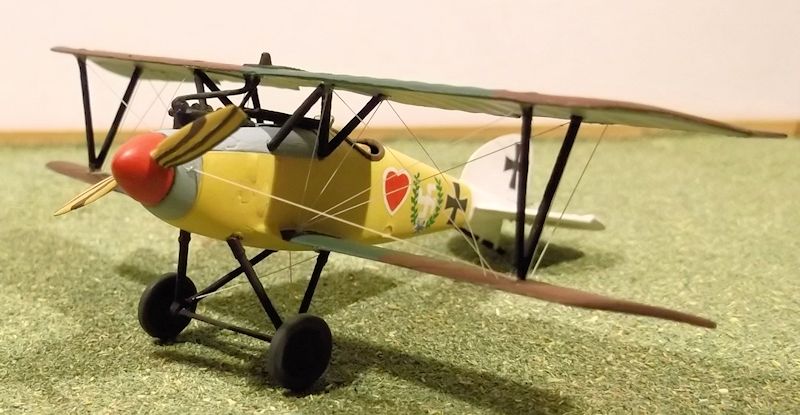
| KIT #: | 04062 |
| PRICE: | approx £3.5 |
| DECALS: | One option |
| REVIEWER: | Stephen Foster |
| NOTES: |

| HISTORY |
The Albatross Dlll was a
development of the earlier very successful Dl and Dll aircraft but differed from
these by having a sesquiplane wing - i.e. the lower wing had a very narrow
chord. This was copied from the Nieuport 11 and 17 fighters which were very
manoeuverable and had similar wing structures: the Albatross fighters were also
very agile, especially in the hands of experienced pilots. They came into
service in early 1917 armed with two mg 1908 Spandaus and immediately helped the
German air arm to achieve air superiority. By the end of the spring many of the
Jastas on the Western Front were fully or
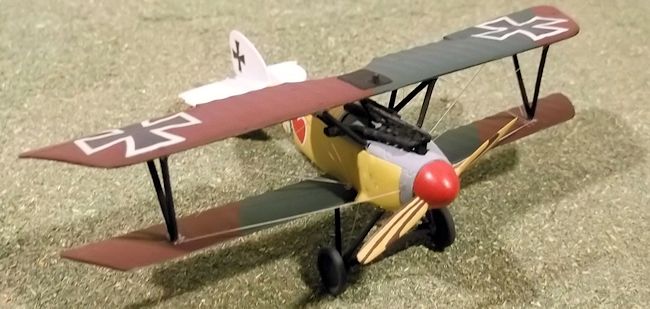 partly
equipped with the type, which remained in production until the end of the year.
It was flown by all of the German aces including M. von Richtofen who achieved
many of his victories with this aircraft. Aircraft which were sent to Palestine
had two radiators fitted to the top wing, and later models had the radiator
offset to the right of the cockpit so that it did not spill boiling water on to
the pilot if it was punctured in a dogfight. Some machines were built by Oeffag
for the Austro-Hungarian air arm. One of the key weaknesses of the design was
the tendency for the lower wing to twist in a steep or fast dive and several
machines and pilots were lost in this way.
partly
equipped with the type, which remained in production until the end of the year.
It was flown by all of the German aces including M. von Richtofen who achieved
many of his victories with this aircraft. Aircraft which were sent to Palestine
had two radiators fitted to the top wing, and later models had the radiator
offset to the right of the cockpit so that it did not spill boiling water on to
the pilot if it was punctured in a dogfight. Some machines were built by Oeffag
for the Austro-Hungarian air arm. One of the key weaknesses of the design was
the tendency for the lower wing to twist in a steep or fast dive and several
machines and pilots were lost in this way.
| THE KIT |
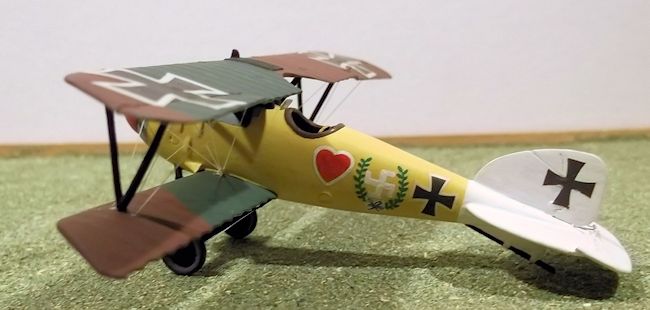
| CONSTRUCTION |
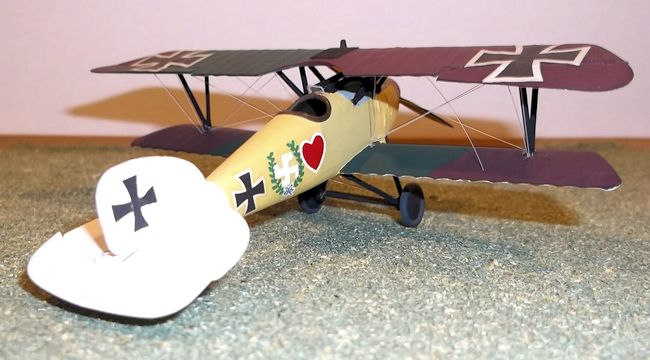 Construction is straightforward but as suggested some may wish to ad more detail
to the otherwise rather bare cockpit area. I added a seat and control column but
little else as much of it cannot be seen by the casual observer. The lower wing,
horizontal tail assembly and tailskid need a little
filler but considering the age of this kit these joins are pretty good. The
engine is simple but as most of it is hidden this too is not important unless
you wish to depict the aircraft with the engine covers removed - in which case
you will have to cut them out and add detail to the engine.
Construction is straightforward but as suggested some may wish to ad more detail
to the otherwise rather bare cockpit area. I added a seat and control column but
little else as much of it cannot be seen by the casual observer. The lower wing,
horizontal tail assembly and tailskid need a little
filler but considering the age of this kit these joins are pretty good. The
engine is simple but as most of it is hidden this too is not important unless
you wish to depict the aircraft with the engine covers removed - in which case
you will have to cut them out and add detail to the engine.
| COLORS & MARKINGS |
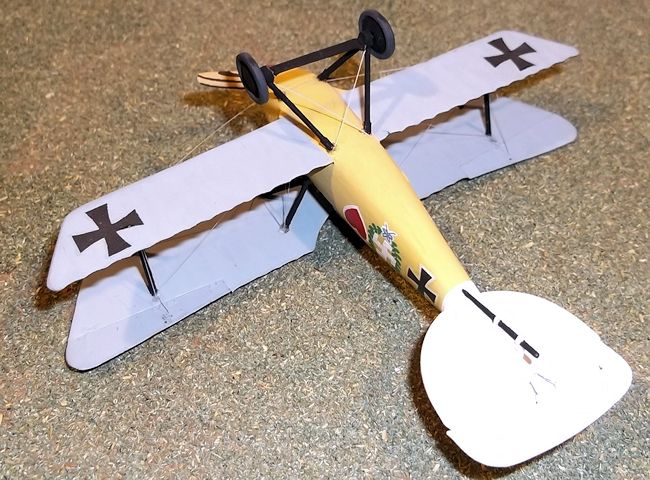 I
always paint my biplane models at this stage as the presence of the top wing
makes accurate work almost impossible. The scheme was
straightforward, but for those who want a better representation of the plywood
fuselage than I have achieved on my model would be advised to search the net for
methods of achieving it. My own model was constructed many years ago before
Revell re-issued the kit with Voss' markings, so mine were hand painted and show
a swastika inside the wreath, whereas
the kit markings have a cross here. It is possible that
both are correct as markings were changed over time, but I suspect that the real
reason why the original swastika is not supplied is because of the ban on Nazi
symbols in Germany. (Voss incidentally was not a Nazi: many pilots, including
some who flew for the allies, decorated their aircraft with this good luck
symbol). I have already stated that there are a very large number of colourful
schemes that a modeller can choose from depending upon your painting skills or
availability of suitable markings.
I
always paint my biplane models at this stage as the presence of the top wing
makes accurate work almost impossible. The scheme was
straightforward, but for those who want a better representation of the plywood
fuselage than I have achieved on my model would be advised to search the net for
methods of achieving it. My own model was constructed many years ago before
Revell re-issued the kit with Voss' markings, so mine were hand painted and show
a swastika inside the wreath, whereas
the kit markings have a cross here. It is possible that
both are correct as markings were changed over time, but I suspect that the real
reason why the original swastika is not supplied is because of the ban on Nazi
symbols in Germany. (Voss incidentally was not a Nazi: many pilots, including
some who flew for the allies, decorated their aircraft with this good luck
symbol). I have already stated that there are a very large number of colourful
schemes that a modeller can choose from depending upon your painting skills or
availability of suitable markings.
| FINAL CONSTRUCTION |
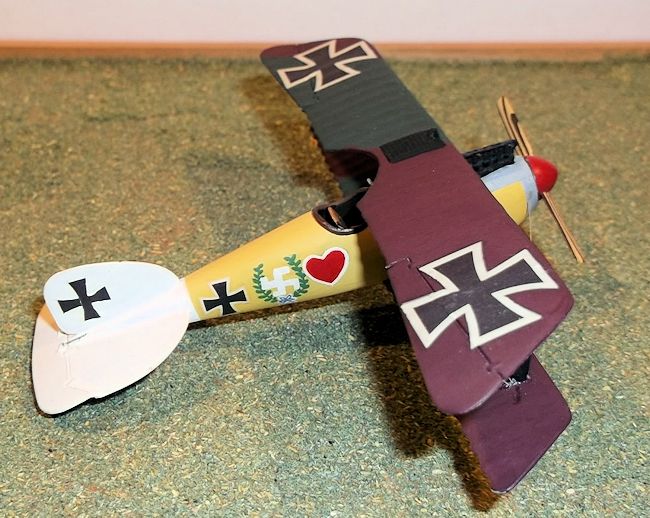
| CONCLUSIONS |
| REFERENCES |
Stephen Foster
July 2014
If you would like your product reviewed fairly and fairly quickly, please contact the editor or see other details in the Note to Contributors.